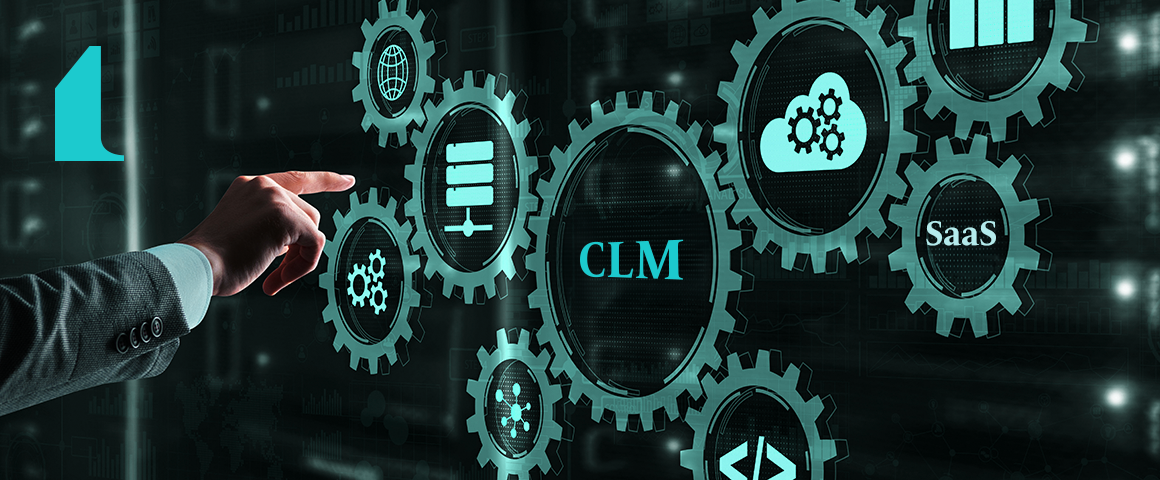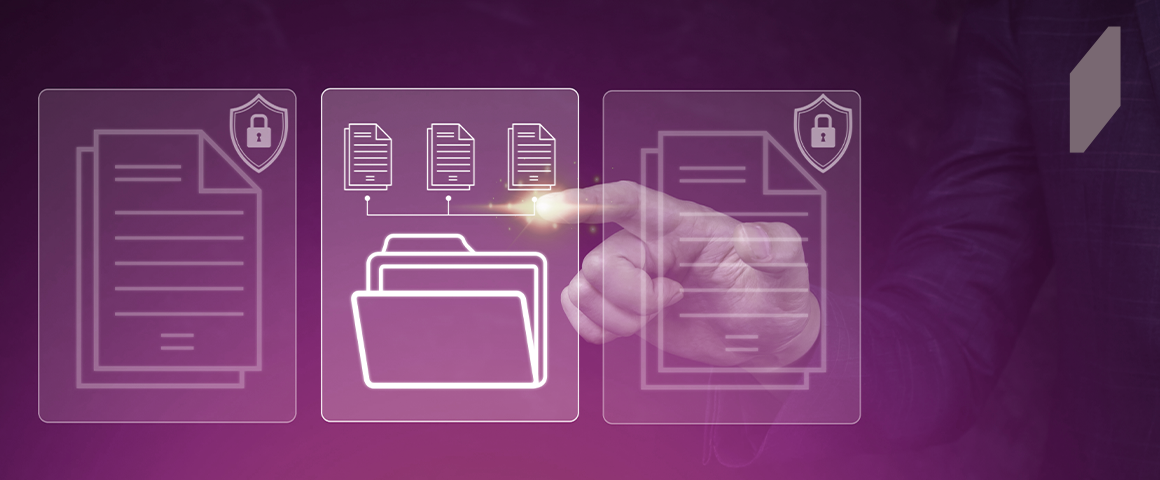CLM Implementation – How to Set Up Your CLM Fast & Easy
Contract Lifecycle Management (CLM) implementation is the process of deploying a CLM solution (or upgrading the existing one) to manage an organization’s end-to-end contract processes. This involves configuring the software to meet the company’s specific needs, migrating existing contracts, integrating with other systems, and training users. Implementing a contract management system is crucial for streamlining contract workflows, improving team efficiency, and maximizing the value of contractual relationships.
A well-executed CLM implementation enables organizations to automate manual tasks, reduce cycle times, and minimize errors. It provides a centralized repository for all contract data, making it easier for teams to collaborate, track obligations, and ensure compliance. By digitizing and standardizing contract processes, CLM solutions help companies scale their contracting capabilities, mitigate risks, and drive better business outcomes.
Benefits of Implementing a Contract Management System
Implementing a CLM solution offers numerous benefits for legal, finance, procurement, and other contract-related teams. It automates repetitive tasks, improves collaboration, enhances risk management, and provides valuable insights. Let’s explore these advantages in more detail.
Increased Efficiency and Productivity
CLM automation significantly reduces the time and effort required for contract creation, review, and approval. With standardized templates, clause libraries, and workflows, teams can generate contracts more quickly and consistently. Automated alerts and reminders keep processes moving forward, while electronic signatures eliminate the need for manual paperwork.
A suitable CLM solution frees up staff to focus on higher-value activities, such as negotiation, strategy, and relationship management, ultimately boosting productivity across the organization.
Enhanced Collaboration and Communication
A centralized CLM platform serves as a single source of truth for all contract information, enabling better collaboration and communication among teams. Stakeholders can access the latest versions of contracts, track changes, and share comments in real time, regardless of their location.
Workflows and approval routes ensure that the right people are involved at the right time, while audit trails provide transparency into all actions taken. This collaboration reduces bottlenecks, minimizes misunderstandings, and keeps everyone aligned throughout the contract lifecycle.
Improved Risk Management and Compliance
CLM solutions help organizations to proactively identify, assess, and mitigate contractual risks. Automated contract reviews can flag potential issues, such as non-standard clauses or missing approvals, allowing teams to address them early on. Configurable rules and workflows ensure that contracts adhere to internal policies and external regulations, reducing the risk of non-compliance.
By centralizing contract data, CLM also makes it easier to monitor obligations, deadlines, and renewals, preventing costly oversights and penalties.
Greater Visibility and Insights
Advanced CLM solutions provide real-time visibility into the entire contract portfolio, enabling data-driven decision-making. Dashboards and reports offer instant insights into key metrics, such as cycle times, contract values, and supplier performance. This allows managers to identify bottlenecks, spot trends, and optimize processes based on actual data.
CLM analytics can also help with budgeting, forecasting, and risk assessment by providing a clear picture of the organization’s contractual obligations and opportunities, ultimately leading to better strategic planning and execution.
CLM Readiness: Preparing for Your CLM Implementation
Before diving into the CLM implementation process, laying the groundwork for success is crucial. This involves defining clear goals, assessing current contract processes, identifying stakeholders, and determining requirements.
The implementation cycle, which includes all phases from planning to post-launch optimization, can vary depending on the organization’s size and complexity. However, by investing time in thorough preparation, you can streamline the CLM implementation process, minimize risks, and ensure a smooth transition. Below are the key steps to preparing for your CLM program.
Defining Goals and Objectives
The first step in preparing for your CLM implementation is to establish clear, measurable goals and objectives.
What do you hope to achieve with your CLM program?
Common objectives include reducing contract cycle times, improving compliance, increasing visibility, and minimizing risk. It’s important to define specific, quantifiable targets that align with your organization’s broader strategic priorities.
This will help to guide your implementation decisions, secure stakeholder buy-in, and provide a framework for measuring success. Involve key stakeholders in the goal-setting process to ensure that your CLM objectives are realistic, achievable, and aligned with departmental needs.
Assessing Current Contract Processes
To effectively implement a CLM solution, you need a clear understanding of your organization’s existing contract processes. Conduct a thorough assessment of your current workflows, from contract requests through to renewal or termination. Identify pain points, bottlenecks, and manual tasks that could be automated. Evaluate your contract templates, clause libraries, and approval processes for consistency and compliance.
Assess your contract data management practices, including storage, search, and reporting capabilities. This assessment will provide a baseline for improvement and help you to prioritize areas for optimization. Consider engaging a CLM consultant or vendor to assist with this process.
Identifying Stakeholders and Securing Buy-In
Success requires the support and engagement of key stakeholders across the organization. Identify the individuals and teams who will be impacted by or involved in the CLM process, such as legal, procurement, finance, sales, and IT.
Engage these stakeholders early in the planning process to understand their needs, concerns, and expectations. Communicate the benefits of CLM and how it will address their specific pain points. Seek their input on requirements, workflows, and integrations. Identify champions within each department who can help to drive adoption and manage change. Secure executive sponsorship to ensure that your CLM program receives the necessary resources and visibility.
Determining Required Features and Integrations
Every organization’s CLM requirements are unique, based on factors such as industry, contract volume, complexity, and existing systems. To select the right CLM solution and plan your implementation, you need a clear understanding of your specific needs.
Identify the essential features and functionalities required to support your contract processes, such as contract authoring, workflow automation, e-signature, and reporting.
Determine which integrations are necessary to ensure seamless data flow and user adoption, such as with your CRM, ERP, or procurement systems. Consider both your current requirements and future scalability. Engage with potential CLM vendors to assess their capabilities and alignment with your needs.
Key Stages of the CLM Implementation Cycle

Implementing a contract lifecycle management system involves several key stages, each crucial for ensuring a successful rollout and adoption. After thorough preparation, the implementation cycle progresses through four main stages: Kickoff & Goals, Configure & Enable, Train & Support, and Adopt & Expand.
Throughout this process, effective project management, communication, and collaboration are essential. Organizations should approach CLM implementation as a structured, phased process, allocating sufficient time and resources to each stage.
Let’s take a closer look at the details of these implementation phases and the best practices for carrying them out effectively.
Kickoff & Goals
The first stage of the CLM implementation cycle is Kickoff & Goals. During this phase, your implementation lead will work closely with your team to understand your contract management needs and initial priorities. This collaboration is essential for establishing clear objectives and success metrics for your CLM implementation.
To begin, schedule a kickoff meeting with key stakeholders from various departments, such as legal, procurement, sales, and IT. This meeting will serve as a platform to discuss current contract management processes, pain points, and desired improvements. Be sure to gather input from all relevant parties to ensure that the CLM solution addresses the needs of the entire organization.
Next, work with your implementation lead to define specific, measurable, achievable, relevant, and time-bound (SMART) goals for your CLM implementation. These goals should align with your organization’s overall strategic objectives and should be communicated clearly to all stakeholders.
Develop a comprehensive project plan that outlines the scope, timeline, milestones, and resource allocation for the implementation. Assign roles and responsibilities to your implementation team, including project managers, subject matter experts, and technical leads. Establish governance structures and communication channels to facilitate effective decision-making and issue resolution throughout the implementation process.
Configure & Enable
The second stage of the CLM implementation cycle is Configure & Enable. During this phase, your implementation team will configure templates and integrations specific to your organizational goals, ensuring that your contracts are managed efficiently and effectively.
Begin by assessing your organization’s existing contract templates, clause libraries, and approval workflows. Work with your implementation lead to identify areas for improvement and standardization. Customize your CLM solution to align with your unique processes, business rules, and compliance requirements.
Next, configure user roles and access controls within the CLM system to ensure that the right people have access to the appropriate information and functionality. Define permission levels for different user groups, such as legal, procurement, and sales, based on their specific needs and responsibilities.
Integrate your CLM solution with other key business systems, such as CRM, enterprise resource planning (ERP) and e-signature platforms. These integrations streamline data flow and enable seamless collaboration between departments.
In parallel with the configuration and integration process, begin the data migration project. This involves inventorying and cleansing your existing contract data to ensure accuracy, completeness, and consistency. Define a data migration plan that includes mapping fields, handling exceptions, and validating data quality. Consider using automated tools or engaging a data migration specialist to streamline the process.
Work closely with your IT team and CLM vendor to establish secure, reliable, and scalable integration architectures. Test integrations thoroughly to ensure seamless data flow and user experience. Plan for ongoing data governance and maintenance to keep your contract data up-to-date and compliant.
Train & Support
The third stage of the CLM implementation cycle is Train & Support. During this phase, you will build a solid foundation for user adoption by leveraging your vendor’s training service platform and intuitive user experience.
Develop a comprehensive training program that caters to the needs of different user groups, from casual users to power users. Create role-based training materials, including user guides, video tutorials, and hands-on exercises. Deliver training through a blend of in-person sessions, webinars, and self-paced e-learning modules to accommodate different learning styles and schedules.
Provide ongoing support and refresher training to reinforce learning and address any knowledge gaps. Establish a dedicated helpdesk or support channel where users can seek assistance and guidance as they navigate the new CLM system.
Engage change champions within each department to promote adoption and provide peer support. These individuals can serve as liaisons between end-users and the implementation team, providing valuable feedback and helping to identify areas for improvement.
Continue the data migration process in parallel with training and support. Regularly review and validate the migrated data to ensure its accuracy and integrity. Address any data quality issues promptly to maintain the reliability and usefulness of the CLM system.
Adopt & Expand
The fourth and final stage of the CLM implementation cycle is Adopt & Expand. During this phase, your organization will focus on driving user adoption, maximizing the value of your CLM investment, and planning for future growth and expansion.
Work closely with your customer success team to implement change management strategies that encourage user adoption and engagement. Monitor system usage and performance metrics to identify areas for improvement and optimization.
Gather user feedback regularly through surveys, focus groups, and informal channels. Use this feedback to enhance training materials, refine workflows, and improve the overall user experience. Celebrate milestones and success stories to maintain momentum and enthusiasm for the CLM system.
Complete the data migration process and perform a final validation of the migrated data. Ensure that all contracts are accurately captured and properly tagged within the CLM system. Establish data governance policies and procedures to maintain data quality and integrity over time.
As your organization becomes more proficient with the CLM system, begin to explore advanced features and functionality that can further streamline and automate your contract management processes. Collaborate with your vendor to stay informed about product updates, best practices, and innovative use cases.
Plan for continuous improvement and system expansion to accommodate evolving business needs and technological advancements. Regularly assess your contract management processes and identify opportunities for optimization and growth. Consider expanding your CLM system to include additional contract types, business units, or geographies as your organization matures in its contract management capabilities.
By following these four key stages of the CLM implementation cycle, while executing data migration in parallel, you can ensure a smooth and successful CLM rollout that drives long-term value for your organization.
Best Practices for a Smooth CLM Implementation
Following these best practices can help ensure a smooth and successful CLM rollout. From starting with a pilot program to prioritizing user adoption and establishing clear governance, these strategies will help you navigate common challenges and set your CLM program up for long-term success.
Start with a Pilot Program
One of the most effective ways to ensure a successful CLM implementation is to start with a pilot program. This involves rolling out the system to a small group of users, such as a specific department or contract type, before expanding to the entire organization.
A pilot allows you to test your configuration, workflows, and integrations in a controlled environment, gathering valuable feedback and identifying areas for improvement. It also helps build momentum and buy-in by demonstrating the benefits of the CLM system to a subset of users. Use the lessons learned from your pilot to refine your approach before the full-scale rollout.
Prioritize User Adoption and Training
User adoption is critical for realizing the full value of your CLM investment. To drive adoption, prioritize training and support throughout the implementation process and beyond.
Develop a comprehensive training program that caters to different learning styles and roles, from high-level overviews for executives to detailed walkthroughs for power users. Use a mix of in-person sessions, webinars, and self-paced e-learning to accommodate different schedules and preferences.
Provide ongoing support through a dedicated helpdesk, user guides, and forums. Regularly gather feedback and use it to improve your training materials and approach. Celebrate successes and recognize users who demonstrate proficiency and leadership in using the CLM system.
Establish Clear Governance and Processes
To maintain the integrity and effectiveness of your CLM system over time, establish clear governance structures and processes from the outset. Define roles and responsibilities for system administration, data management, and user support. Establish policies and procedures for contract creation, approval, execution, and storage, ensuring compliance with legal and regulatory requirements.
Set up access controls and permissions to protect sensitive data and maintain separation of duties. Regularly review and update your governance framework to keep pace with changing business needs and best practices.
Plan for Ongoing Optimization and Expansion
A successful implementation is not a one-off event, but an ongoing process. Schedule regular system updates, enhancements, and upgrades to keep pace with changing business needs and technological advances.
Monitor system performance and user behavior to identify opportunities for optimization, such as streamlining workflows, improving data quality, or adding new features. Conduct regular assessments of your contract management processes to identify gaps and opportunities for improvement.
During and after the CLM procurement, continuously engage with your vendor and the user community to stay informed about best practices, industry trends, and innovative use cases. Continuously measure and report on key performance indicators to demonstrate the value of your CLM system and justify further investment. Embrace an attitude of continuous learning and improvement to maximize the long-term success of your CLM program.
Wrap Up
Implementing a CLM system is a significant undertaking, but the benefits of a well-planned and executed implementation are substantial for your organization. From increased efficiency and cost savings to improved compliance and risk management, a CLM system can transform your contract management processes.
To achieve these benefits, you will need to approach implementation as a structured, collaborative effort that engages your stakeholders, aligns with your business goals, and prioritizes user adoption within your organization.
At Malbek, one of our key focus areas is ongoing support, which includes helping our partners find the right features and custom settings and implement the CLM flawlessly into their organizations’ existing ecosystem. Interested in knowing more about our Malbek 360° approach? Get in touch with our customer success team today!






